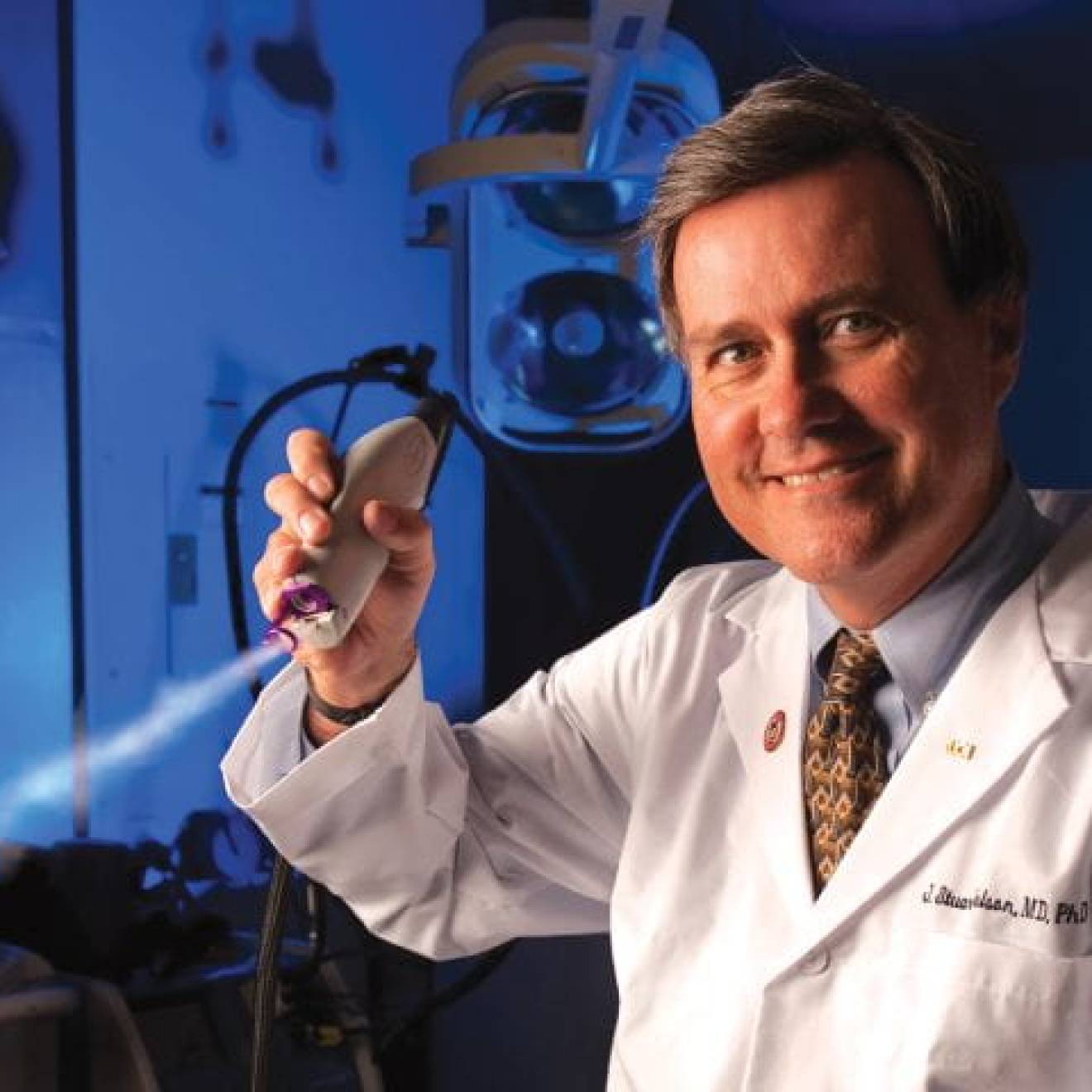Harrison Tasoff, UC Santa Barbara

Though individuals on the autism spectrum often seem to exist in their own worlds, they still must learn to navigate life in the social world we all share. Early interventions are critical to their personal development and ability to thrive in modern society.
Enabling parents to provide their children gold-standard treatment at home is the goal behind a mobile application being developed by Ty Vernon, director of UC Santa Barbara’s Koegel Autism Center. The Department of Defense’s Autism Research Program is supporting Vernon’s effort by way of a $738,000 grant that will provide for two years of research, development and testing.

Autism encompasses a spectrum of conditions characterized by challenges with socialization, communication, and restricted and repetitive behaviors and interests. Social connection is particularly important for human development. “We’re social creatures,” Vernon said, “so we learn almost everything by watching other people, and then imitating them.
“If we are less inclined to pay attention to and engage with other people, then we’re missing out on that rich learning experience,” he added, “which not only impacts language development, but also social and cognitive development. Pretty much every domain is affected if we don’t have strong desire for human connection.”
Autism treatments have historically been conducted by a therapist, but Vernon and his colleagues have seen a huge benefit in teaching parents how to apply the various techniques.
“We found that when we taught parents how to do this, suddenly we could take advantage of all their expertise, too,” he said. “Parents are also able to deliver therapy at times that we can’t. If parents know how to do it, they can weave it naturally into daily routines.”
Enter the ubiquitous smartphone. “If we can put this into a package that people could download onto their smartphone and work through lessons, videotape themselves doing the treatment, and review their own performance, we could reach thousands of people nationwide, or even around the world,” Vernon said.
The center is developing an app for iOS and Android, the two most common smartphone operating systems. In addition to enabling widespread use, the application will bundle the various functions from previous, pilot studies into a single platform.
Vernon and his team have partnered with Novacoast, Inc., a Santa Barbara-based software company, to develop the app. The company boasts expertise in digital security and encrypted application development, which are important features for ensuring the confidentiality of families who will be using this program.
Meanwhile, members of the Koegel Autism Center research team will begin developing lessons and materials. The application will include a wealth of video examples and tutorials, as well as troubleshooting advice.
This development, Vernon noted, has arrived at an opportune time, just as many services are going remote and digital. “Ideally, we’ll be able to provide something for families that have seen a lot of their in-person services postponed or shut down temporarily,” he said.
Motivation-based behavioral therapies have emerged at the forefront of successful interventions with children on the spectrum, particularly related to language acquisition, according to Vernon. The theory is that many of the issues these children face are rooted in social motivation issues. Namely, children with autism may not be as intrinsically motivated to attend to the social aspects of their environment. As a result, they may miss out on important opportunities for learning.
These interventions focus on harnessing a child’s interests to motivate them to learn skills and behaviors important to their development. For instance, if a kid really enjoys bubbles, a parent might incorporate this activity into therapy. A mother might blow bubbles a few times to capture the child’s interest.
“When the child is engaged in the activity, the parent pauses and prompts ‘bubble?’ If the child makes any attempt to communicate (e.g. saying ‘buh!’) the parent rewards this attempt right away by blowing the bubbles again,” said UC Santa Barbara doctoral candidate Liz Greenfield.
“Suddenly there’s a lot of power in the child using their voice,” Vernon added. If making an attempt to say a toy’s name gives them access to it, the child now has a reason to use their words. Over time, these types of exchanges can jumpstart language development and make children excited to engage with others.

An online pilot study in 2019, led by Greenfield, demonstrated that parents could master the techniques of this motivation-based therapy, called Pivotal Response Treatment. The study showed that, despite not having tailored feedback from professionals, parents learned fairly quickly through reviewing informational slides and video examples.
“These findings were very exciting and supported the use of a self-guided, online Pivotal Response Treatment intervention,” Greenfield said. She followed up with a 28-family randomized controlled trial, which reinforced the findings that parents could successfully administer these therapies.
The families did, however, find it somewhat difficult to navigate between the various programs involved in watching lessons, recording and uploading videos, and reviewing material. So the challenge was figuring out how to disseminate training to parents nationwide in a user-friendly package. And this is the sort of task that consumer technology excels at.
The team hopes to have a working version ready after their first year of work. At that point, the researchers will recruit 48 families from across the U.S. to participate in a clinical trial in year two. This will enable them to develop a more robust version for a larger trial and dissemination in the future.
“The idea is to have it be a very low-cost solution so that people are able to access this application and get the help that they need regardless of their financial situation,” Vernon said. This is critical because despite advances in early interventions for autism, many families are not able to access the latest evidence-based treatments.
“An app has the potential to bridge this gap by increasing access to treatment and empowering parents with tools to support their child’s development,” Greenfield said.
The team’s ultimate goal is to get the project to a point where it’s self-sustaining and then reinvest this revenue in order to further develop the application.
In Vernon’s mind, this project reflects the character of the center as a whole. “Something that our center in general has really focused on is the strengths of individuals with autism,” he said. “Oftentimes in those strengths lies the key to effectively working with folks on the spectrum.”

